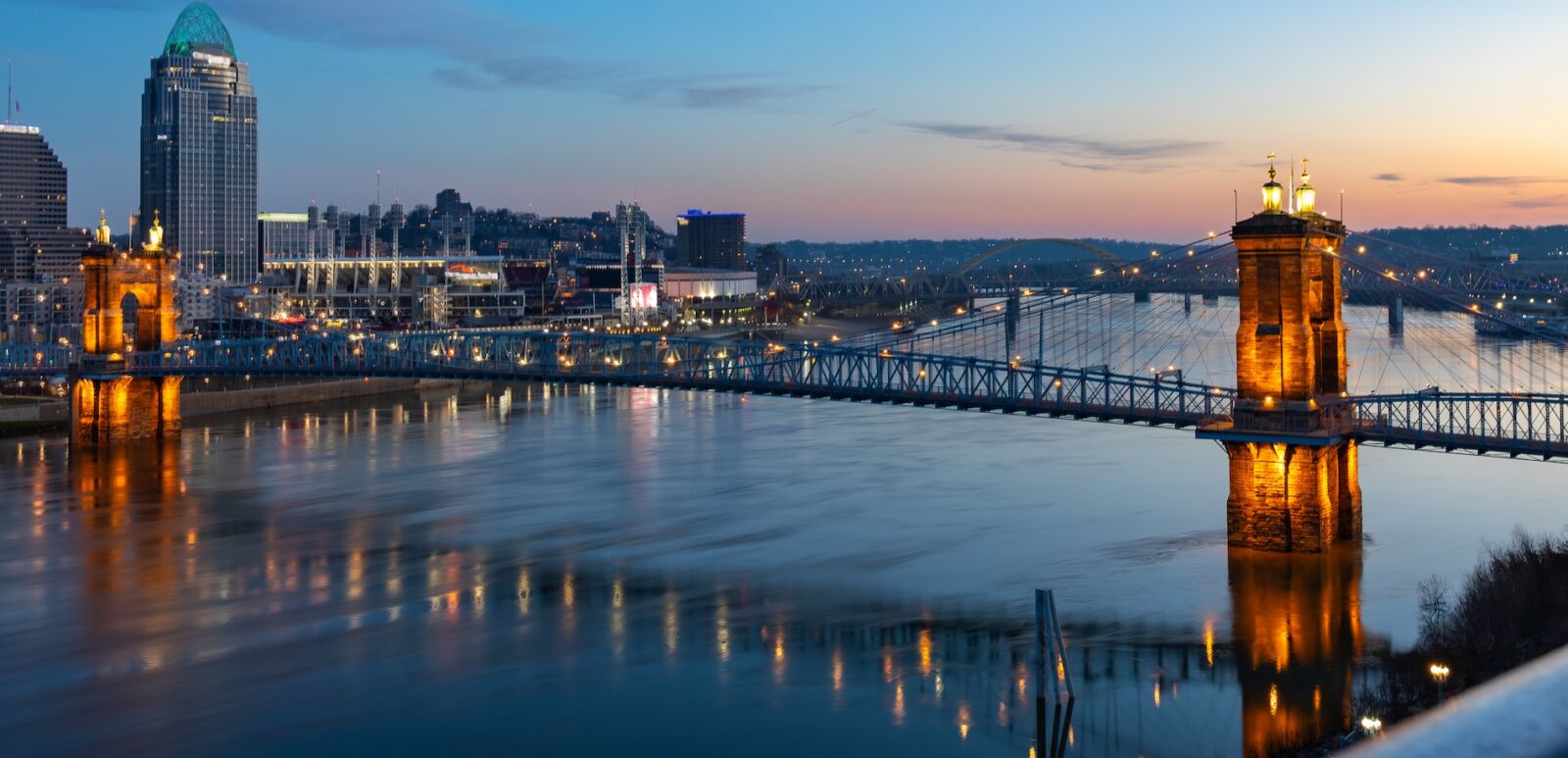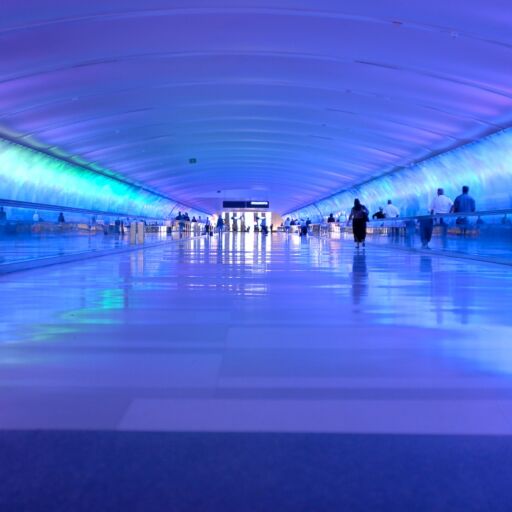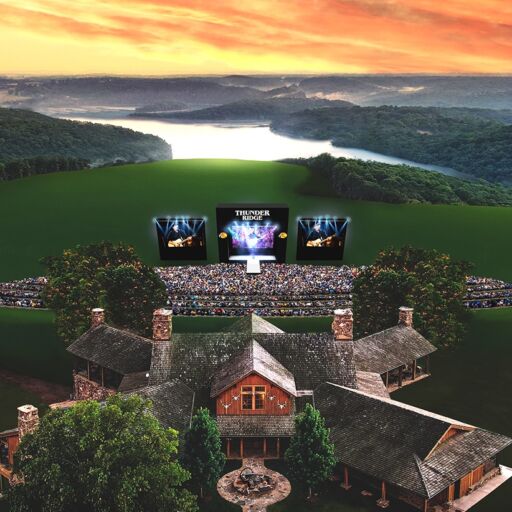Part of this country’s allure has always been its mix of influences and how that manifests in culture. The diversity is especially obvious in the architecture that fills our cities, where you can walk past Seville-inspired towers just down the block from Mediterranean revival structures or Art Deco monoliths. Some places blend many styles, amounting to ongoing outdoor museums. Others take one specific method and make it their signature or hide some of their best design indoors. If you love architecture, you’ll love the destinations we’ve gathered here. These eight cities are some of the best places to see standout American examples of world-class architecture.

Though earlier this century Buffalo was an unfairly maligned poster child for urban decay, a hundred years ago it was one of the most vibrant cities on the planet. That era, and the money that came with it, attracted legendary architects like Frank Lloyd Wright, Louis Sullivan and Henry H. Richardson to the city. The impressive structures they designed still stand, including the Romanesque Revival Richardson Hotel, formerly the Buffalo State Asylum for the Insane, and the recently restored Martin House, the Wright-designed home of a Larkin Co. executive.
Buffalo’s downtown is a trove of architectural marvels, highlighted by the titanic Art Deco City Hall. It stands as the city’s most recognizable skyscraper with its geometric glass dome glowing above the horizon. Around the corner, the Electric Tower is a smaller Deco structure inspired by a building at the 1901 Pan-American Exhibition. And, down the street, the cubic Ellicott Square Building was once the largest commercial building in the world. Underneath its huge skylights, the Ellicott Square Building still houses some of the city’s most ornate floors, shield-like patterns laid with innumerable, minuscule tiles. If you’re downtown, take time to step inside the domed Buffalo Savings Bank building too, now an M&T Bank. Its interior is covered in 140,000 sheets of gold leaf and maintains the original frescos.
Charleston, S.C.
Charleston isn’t as much a city as a museum of architectural styles, where you can wander the historic streets and see examples of Greek Revival, Italianate, Classic Georgian and other styles. The luxe Wentworth Mansion blends Italianate and Victorian Second Empire to create one of the most stunning houses in the world. And you’ll even find some cool Art Deco at the roaring ’20s Riviera Theater. Charleston also rivals some cities in Europe for stunning churches. Be sure to check out the Huguenot Church and the towering St. Michael’s Episcopal while you’re in town.
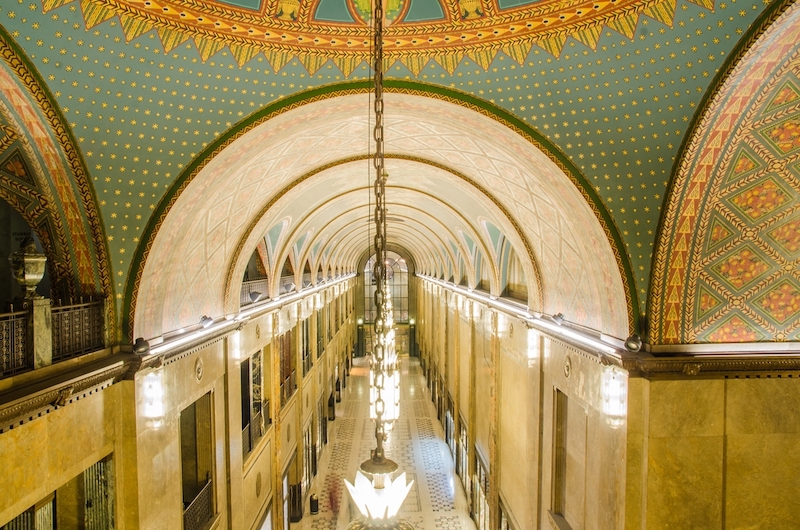
During the last century’s heyday of American automobile manufacturing, Detroit was awash in opulence. And while you can appreciate the patchwork of intricate architecture styles that make up the city’s skyline by simply walking around, venture inside and you’ll find the city’s cleverest constructions. Prolific industrial architect Albert Kahn was the man behind many of these masterpieces, including the Fisher Building — aka Detroit’s largest art object — an Art Deco stunner filled with golden doors, marble pillars and colorful frescos. Not far away, in the New Center, sits Kahn’s Cadillac Place, the former home of General Motors that has a vaulted arcade (a passageway covered by arches) with Italian marble walls. Though not a Kahn design, The Detroit Institute of the Arts would be a museum even if nothing filled its galleries. The carved ceilings in the Beaux-Arts beauty will almost make you forget what’s on the many walls.
You can see all of these buildings and more from the front seat of a classic Ford Model A with Antique Touring Co. Or you could just go see a live show. The Fox Theatre downtown is a testament to Roaring ’20s luxury, and the detail in its red-columned walls and golden ceilings are as impressive as whatever’s onstage. Likewise, the Detroit Opera House, which was once a cinema and is now home to the Michigan Opera Theatre, easily has some of the grandest chandeliers and staircases in the Midwest.
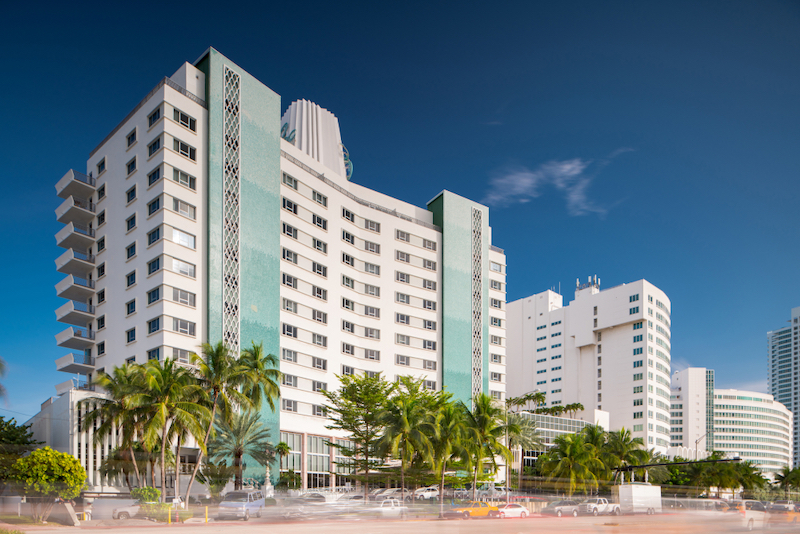
When you’re talking about Art Deco, you’re talking about Miami Beach, which has the largest collection of Art Deco buildings in the world. They’re most prominent along Ocean Drive, where landmarks like the Colony, Clevelander and Park Central hotels have become icons of the city. Miami’s architectural prowess extends past the Deco District, though. Head north on Collins Avenue and you’ll arrive at a pair of Morris Lapidus gems at the Fontainebleau and Eden Roc hotels, both painted that bright Miami white. Lapidus also designed the Lincoln Road Mall, a pedestrian shopping center filled with modern sculptures and plants to create a more intimate atmosphere.
Lincoln Road is also home to the 1111 Garage, a parking structure with triangular pillars and levels of varying heights that looks more like a Guggenheim museum than a car lot. Moving across Biscayne Bay to Miami proper, you’ll find excellent examples of modern architecture like the Zaha Hadid-designed One Thousand Museum supported by an exoskeleton, and the meandering landscapes of Maurice A. Ferré Park across the street. Miami even has a handful of classic old Mediterranean Revival buildings remaining, most notably downtown’s Freedom Tower and the elegant Biltmore Hotel in Coral Gables.
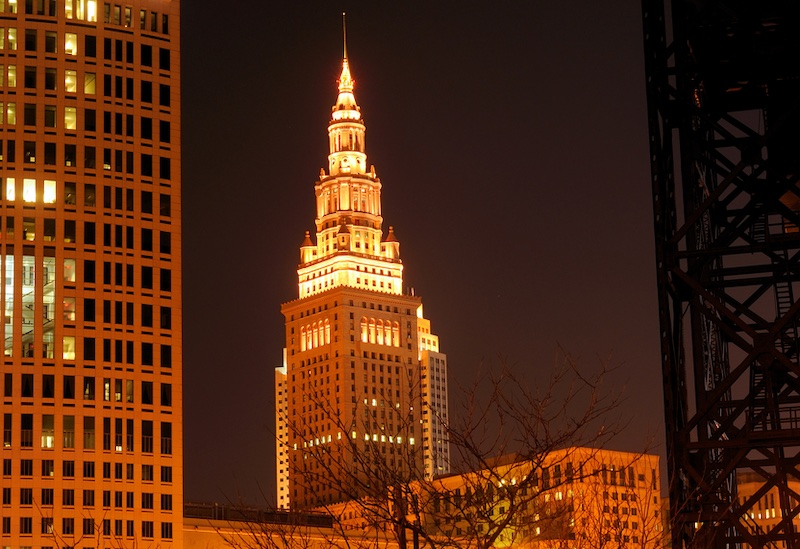
Another gem of Rust Belt architecture is Cleveland, whose most unique architectural contributions are its European-inspired arcades, most notably downtown’s Euclid and Colonial arcades. They’re the sort of places where you could post pictures and convince people you were somewhere in Milan, not on the shores of Lake Erie. Downtown is also home to Cleveland’s landmark Terminal Tower, a 52-story Beaux-Arts skyscraper that was the tallest building outside New York from 1927 to 1964. It sits above the old Union Terminal train station, an equally alluring building that houses both the large, windowed arches of Tower City Center and JACK Cleveland Casino, which you may recognize as Higbee’s from “A Christmas Story.”
A little outside downtown sits Cleveland’s landmark Westside Market, a neo-Byzantine Midwestern bazaar where fresh meats, vegetables and grains are still sold to this day. The bustle under its domed, redbrick ceilings harken back to an era when Cleveland was a capital of the country’s breadbasket, and you can enjoy the entire scene while sipping a cold beer at Great Lakes Brewing nearby.
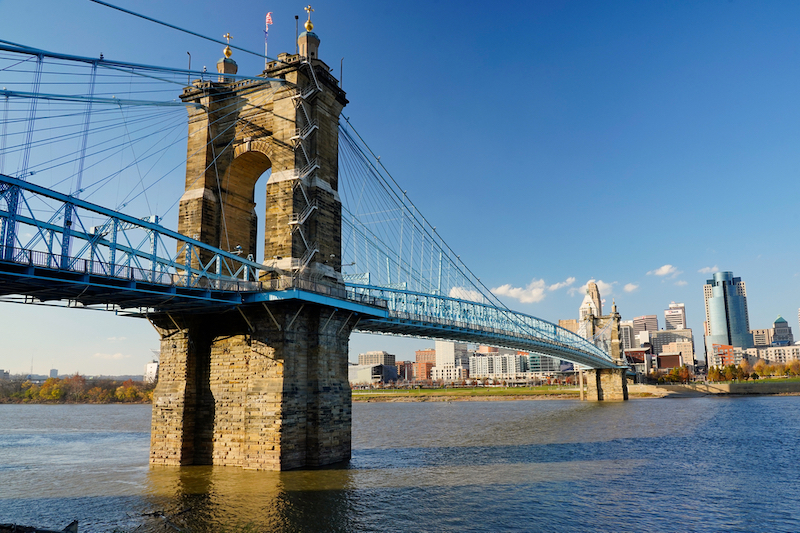
As you cross Cincinnati’s Roebling Bridge from Kentucky, you see it — the city’s standout skyline with its breathtaking views of glimmering towers and hills. Even the bridge is beautiful. If it looks familiar, that’s because the Roebling Bridge was the model John A. Roebling used when he designed the Brooklyn Bridge in New York 16 years later.
However, Cincy’s niche on the American architectural scene lies beyond its downtown in the recently revamped Over-the-Rhine. This previous German immigrant enclave claims one of the best collections of intact Italianate architecture in the country. The many-colored brick buildings with their ornamental cornices are so concentrated and so impressive here, Over-the-Rhine is often used as a movie stand-in for Manhattan’s Lower East Side, among other neighborhoods. That fact, plus the breweries that fill the neighborhood like Rhinegeist and Northern Row, are more than reason enough to spend a day here.
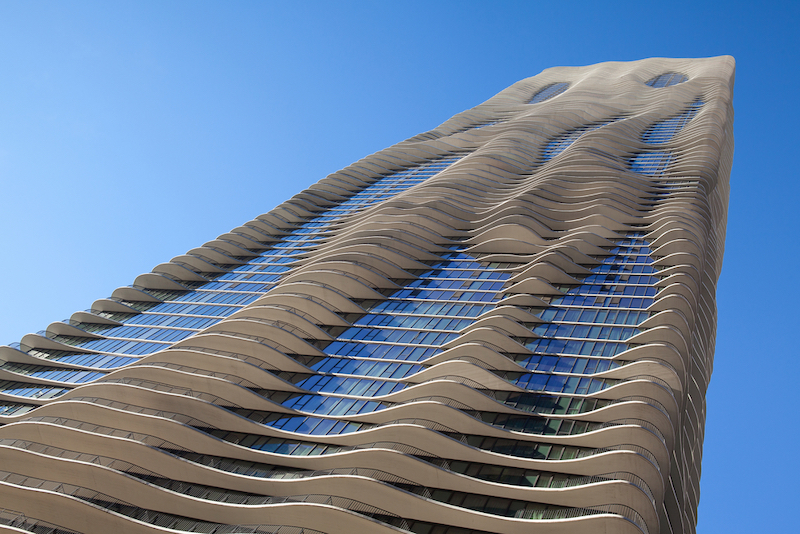
For great American architecture, one need look no further than the view of the Chicago River from the Windy City’s Upper Wacker Drive. In one direction you’ll spot the stately, Spanish-inspired Wrigley Building, and in the other the iconic spiraling parking garage under Marina City. Chicago architecture runs that gamut, from the gargantuan Art Deco industrial monster at the Merchandise Mart to the iconic dual-spired John Hancock Building. Frank Lloyd Wright’s Prairie style is on display at the Robie House, a UNESCO World Heritage Site built in 1910.
Much like the city itself, Chicago’s architecture has evolved with the times. While you can see great examples of older styles, buildings like the Aqua Tower downtown show how the city has adopted modern design too. The new St. Regis nearby is an undulating collection of glass towers that stand as the third-tallest building in the city, and the tallest towers designed by a woman.
New York, N.Y.
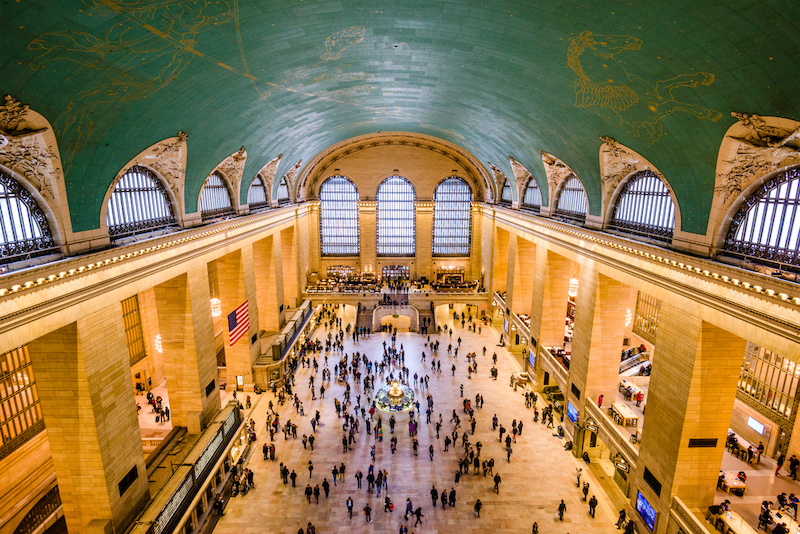
New York’s architecture, much like its food, people and culture, has a little bit of everything. While it would be hard to pinpoint the city’s most famous structure, the Empire State Building makes a strong case as an Art Deco testament to modern engineering. It’s followed closely in fame by the Chrysler Building, a similar Deco skyscraper that’s nearly as noticeable and arguably more aesthetically pleasing.
NYC’s great architecture sits at ground level too, from the circular galleries of Frank Lloyd Wright’s Guggenheim Museum to the Beaux-Arts beauty of Grand Central Terminal. The triangular Flatiron Building is a model that nearly every other city in the United States has tried to copy, and the TWA Hotel at John F. Kennedy International Airport, which flipped an old flight center into a hotel with a destination pool, is one of the coolest adapted-use projects in the country. For lovers of modern architecture, check out the boxy New Museum or the frilled World Trade Center Transportation Hub.
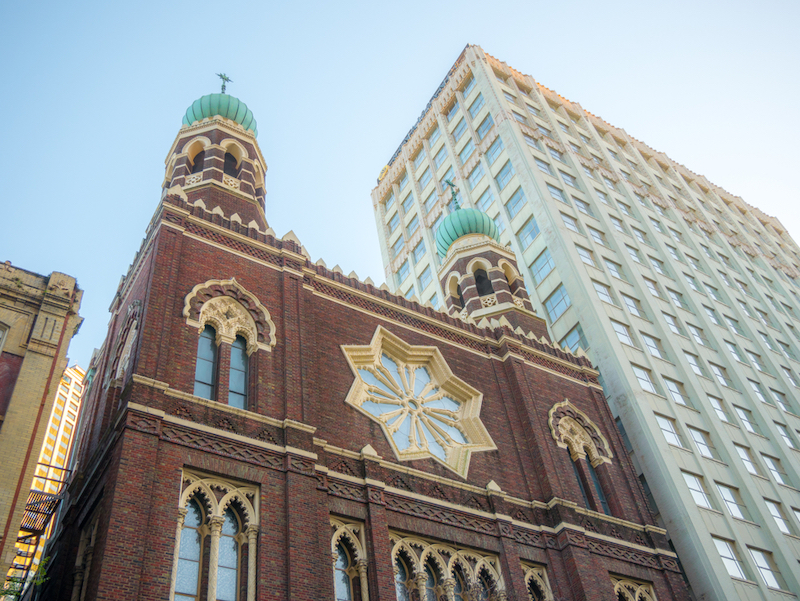
When one thinks of New Orleans, images of wrought-iron balconies along colorful French-Creole apartment buildings immediately spring to mind. Sure, the French Quarter and some of the surrounding streets have a brilliant collection of this style. But, much like you must venture beyond the French Quarter to experience New Orleans, so must you go further afield to discover the rest of the city’s unique architecture.
The Big Easy is the odd city to have both Egyptian and Moorish Revival architecture at the U.S. Customs House and Immaculate Conception Church, respectively. Spared from the ravages of the Civil War, the stately houses along St. Charles Avenue are the largest collection of antebellum homes in the United States. On the other economic end of the historic housing spectrum, walk through the Garden District and Uptown, where you’ll see examples of the old shotgun shacks and Creole cottages that once housed New Orleans’ working-class families.
Santa Fe, N.M.
Great architecture doesn’t always have to have provocative innovations or intricate detail. Sometimes it can be functional. Take the adobe wonderland that is Santa Fe, where buildings were originally constructed to keep dwellers cool in the harsh desert environs, made of nothing more than earth, water and straw. Many of the city’s oldest adobe buildings still exist, including the oldest church in the U.S. at the San Miguel Mission, and its oldest inhabited public building at the Palace of the Governors. While Santa Fe’s Oldest House may or may not be the oldest house in America, it’s still a marvel of architectural longevity, standing for over 400 years. You can also stop into La Fonda on the Plaza for a margarita, a hotel that’s been some sort of lodging since 1609.


